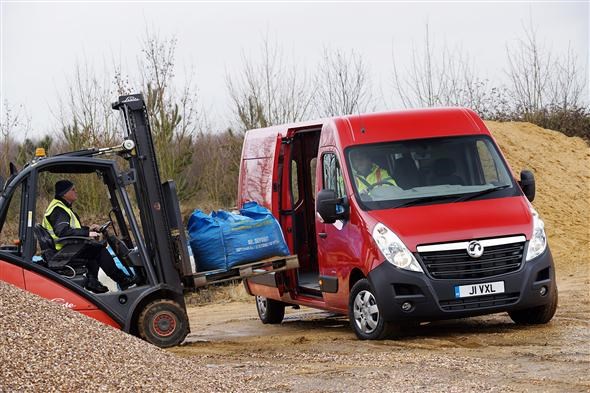While in the market for a new van, buyers tend to pick a van that has a maximum payload and load volume close to their everyday load, with a lot of drivers choosing to drive illegally the odd time they are carrying a bit extra. But what are the legal weight and length restrictions of each vehicle, and where can they be found?
Exceeding the payload
Van overloading is becoming a huge problem with 89 percent of the 10,800 vans stopped by VOSA (Vehicle and Operator Services Agency) during 2015 found to be overloaded. More worryingly, the DVSA (Driver and Vehicle Standards Agency) estimates that over 1.2 million van drivers (almost 50 percent of the market) are regularly overloading, which invalidates the insurance.
The technical data section of a Parkers Vans review will state the payload of most van makes and models, past and present. Be aware though that this figure doesn’t include the weight of the driver, passengers and any aftermarket fittings (like ply lining, roof racks and storage trays), although it does include the weight of fuel and lubricants (be sure to check manufacturer websites to be certain).
If in doubt, a number of responsible builder’s merchants are now offering weigh bridges so that drivers can be sure they’re correctly loaded before they leave the yard.
In certain cases, it’s possible to be under the permissible gross vehicle weight (GVW), but still overloading because the majority of the load is centred on one axle. In such circumstances, the driver can be asked to redistribute the load across both axles.
The weight plates for commercial vehicles are usually located within the driver’s door sill or the engine bay. There are four figures given: the first denotes the gross vehicle weight, the second gives the gross train weight (maximum weight of the vehicle, trailer and all of their contents), the third gives the maximum first axle weight and then the second axle weight.
Consequences and penalties of overloading
In addition to invalidating the insurance, overloading can have a number of dangerous side effects. Exceeding the design weight can lead to rapid tyre deflation and failure (a blow-out), an affect on the steering and handling, an increase in stopping distance and more.
A £100 penalty will be levied for a vehicle overloading up to 10 percent, but VOSA examiners will allow a five percent tolerance unless the relevant weight has been exceeded by one tonne or more. This increases to £200 between 10 percent and 15 percent, and £300 for between 15 percent and 30 percent; thereafter a court summons is usually issued.
Overhang at the rear
Vans with long items, such as piping or planks of wood, that overhang up to a metre at the rear aren’t required to display any signs or markers, although it is good practice to attach a brightly coloured piece of cloth (usually a hi-viz jacket or luminous straps) to the end.
If the length of the overhang is between one metre and two metres, the object, by law, must be rendered ‘clearly visible’, which means the hi-viz jacket, luminous straps or a flag become a mandatory requirement. Loads overhanging between two and 3.05 metres require a special marker board (to DfT standards) and over 3.05 metres requires attendants and two days’ notice to the police.
If you have one of the doors open at the rear, make sure it isn’t the one bearing the number plate as the registration needs to be facing directly behind at all times. Strangely, the penalties for overhang tend to be more serious than overloading, with three points issued and a £100 fine for loads that are incorrectly marked.
Also read:
Best 3.5t dropsides for payload
Just so you know, we may receive a commission or other compensation from the links on this website - read why you should trust us.




